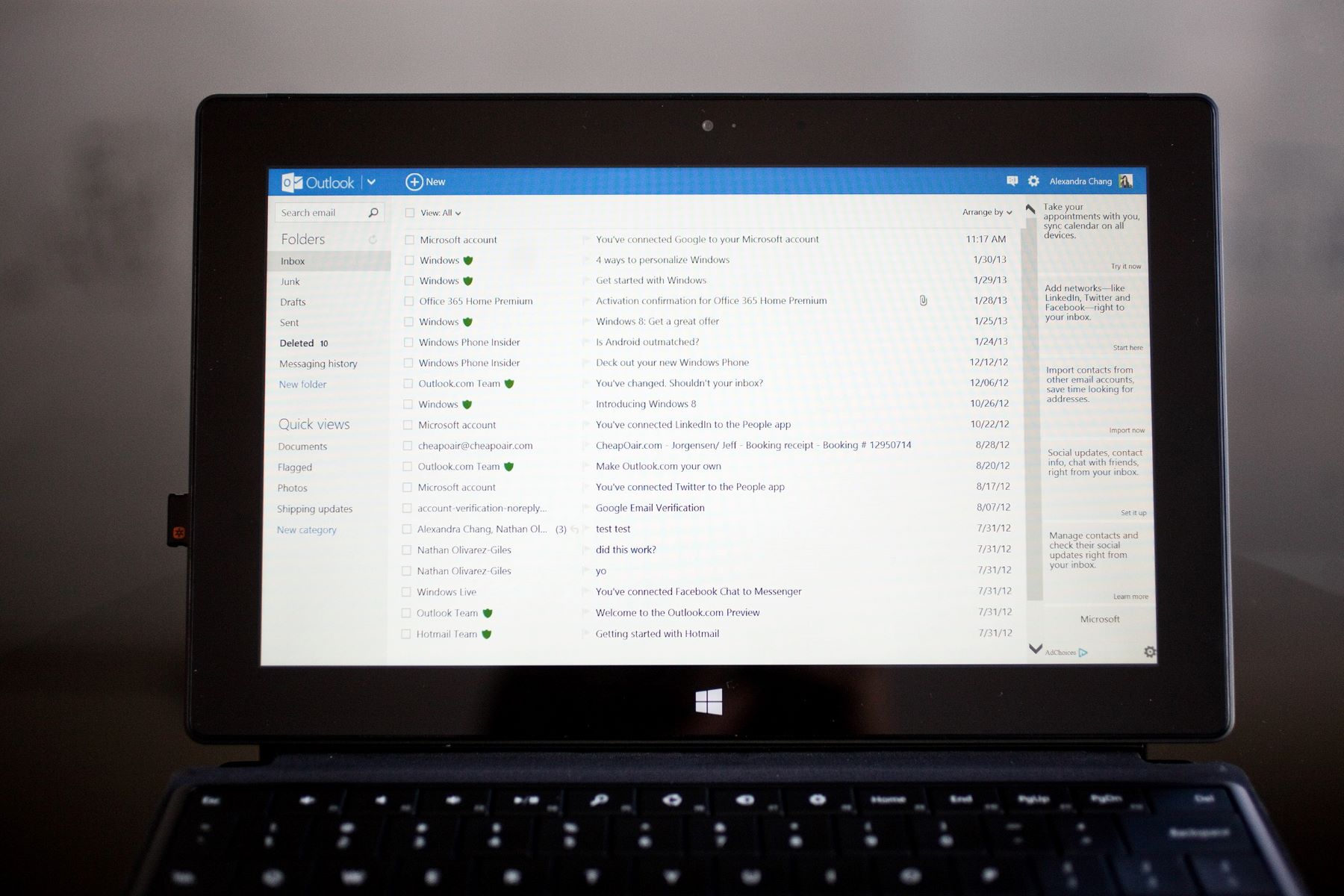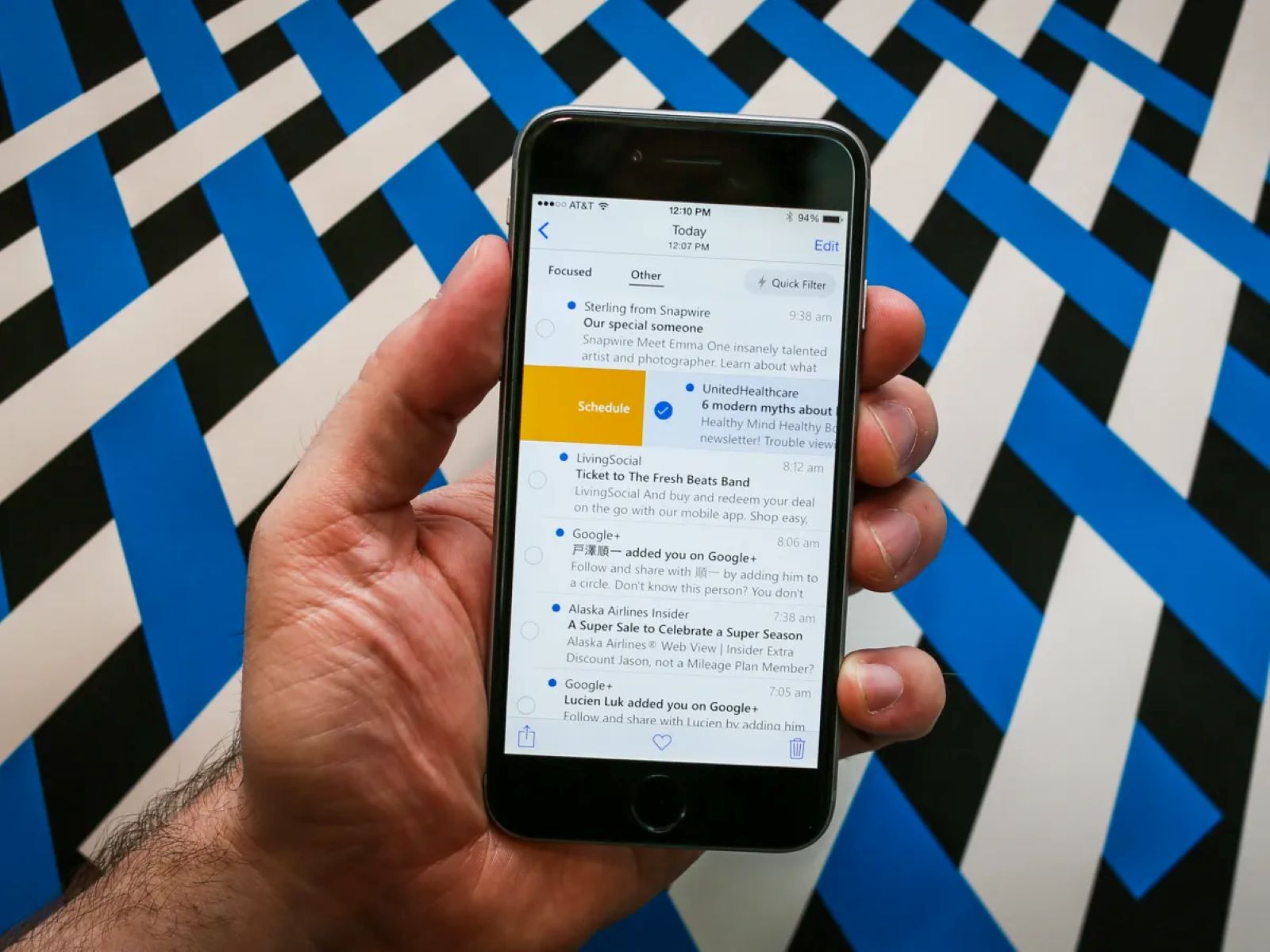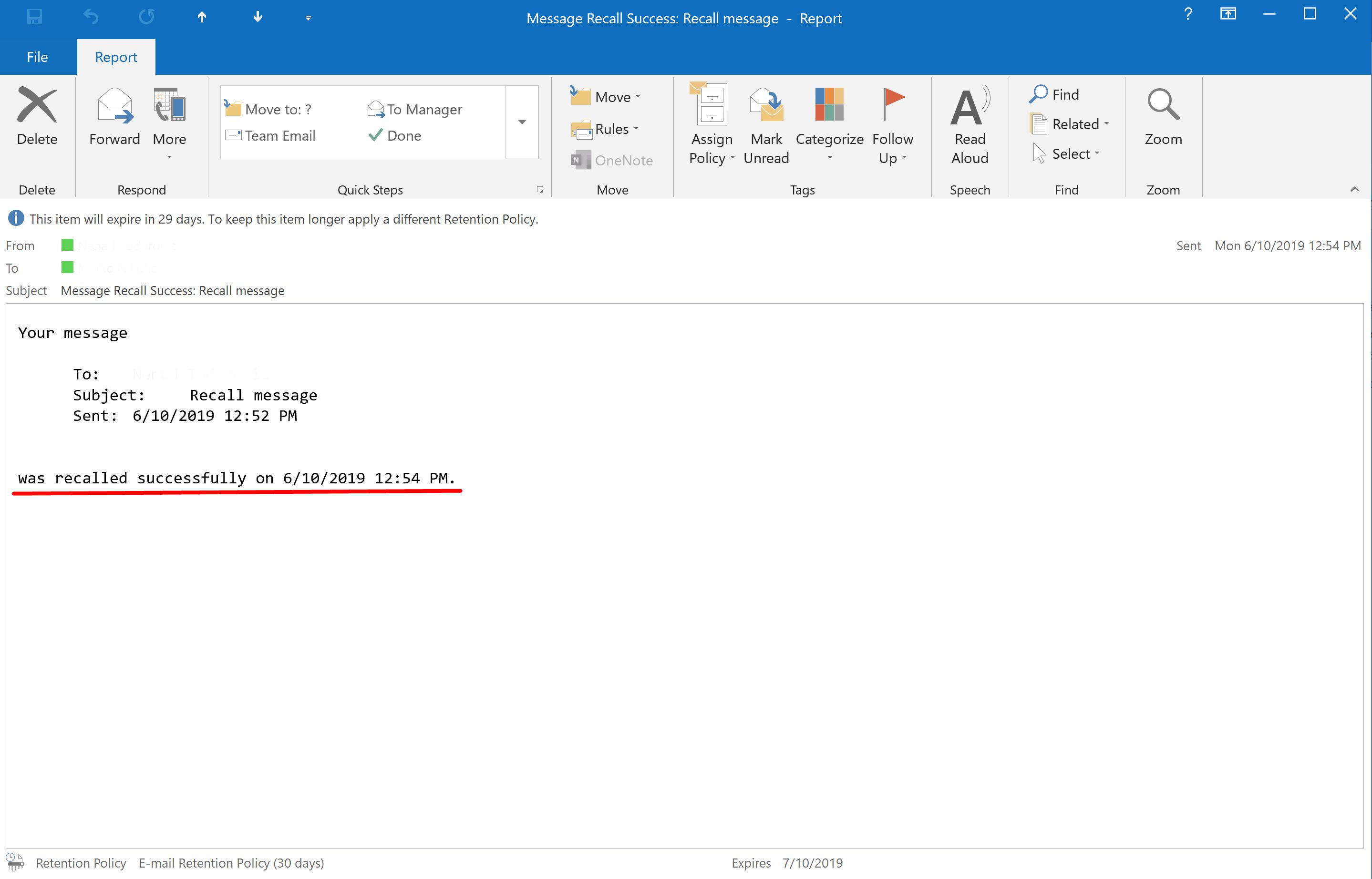Introduction
Outlook is one of the most popular email clients used by individuals and businesses alike. It offers a wide range of features and customization options to enhance your email experience. One of the key aspects of Outlook is its email view, which determines how your emails are displayed and organized within the application.
Changing the Outlook email view allows you to tailor the way you interact with your emails, making it more efficient and personalized to your needs. Whether you prefer a compact or expanded layout, a specific font style or color, or a particular organization of columns, Outlook provides various options to customize your email view.
In this article, we will explore the different ways to change the Outlook email view and optimize it according to your preferences. From adjusting the reading pane position to customizing the column layout, you’ll learn how to make Outlook work seamlessly for you.
If you’ve ever found yourself struggling with the default email view in Outlook or simply want to make your email management more comfortable, read on to discover the steps that will help you transform your email view and boost your productivity.
Overview of Outlook Email View
The Outlook email view refers to the way your emails are displayed on the screen. It encompasses various elements such as the reading pane, message preview, column layout, conversation view, font and style, reading pane layout, email theme, and display density.
The reading pane is the area where you can preview the content of your selected email without opening it fully. It allows you to quickly scan through your messages and decide which ones require immediate attention.
The message preview feature shows a snippet of the email content below the subject line in your email list. This can be useful for getting a quick overview of the email without opening it. You can choose between different preview options or disable it altogether if you prefer a more compact view.
The column layout determines the information displayed for each email in the list view. You can customize the columns to include details such as sender, subject, received date, size, and more. This enables you to quickly identify and sort your emails based on specific criteria.
Conversation view groups related emails together in a conversation thread. It simplifies your inbox by grouping emails with the same subject line, making it easier to follow a conversation and locate specific messages.
You can customize the font, size, and style of the text in your emails to improve readability and match your personal preferences. Outlook offers a range of font options and formatting choices to make your emails visually appealing.
The reading pane layout allows you to choose between a side-by-side or bottom view. This determines the position of the reading pane in relation to the email list. You can adjust it based on your screen size and personal preference.
The email theme feature allows you to change the overall visual appearance of Outlook. You can choose from a variety of color schemes to personalize the look and feel of the application.
The display density option determines the spacing and density of the emails in your inbox. You can choose between compact, medium, and relaxed views to optimize the use of screen space.
Understanding the different components of the Outlook email view is essential to customize and optimize your email management experience. In the following sections, we will explore each of these aspects in detail and guide you through the steps to change your Outlook email view according to your preferences.
How to Change the Reading Pane Position
The reading pane in Outlook allows you to preview the content of an email without opening it fully. By default, the reading pane is positioned on the right side of the email list. However, you can change its position to the bottom or even disable it if you prefer a more compact view.
To change the reading pane position, follow these steps:
- Open Outlook and go to the “View” tab on the ribbon.
- In the “Layout” group, click on “Reading Pane”.
- A dropdown menu will appear with three options: “Right”, “Bottom”, and “Off”.
- Select “Right” if you want to keep the reading pane on the right side, “Bottom” if you prefer it at the bottom, or “Off” to disable the reading pane completely.
- The reading pane will immediately change its position based on your selection.
Changing the reading pane position allows you to customize the layout according to your workflow and preferences. If you have a widescreen monitor, having the reading pane on the right side can be more beneficial as it provides a wider area for email content. On the other hand, if you prefer a more spacious email list and want to view more emails at once, you can choose to position the reading pane at the bottom or disable it altogether.
Experiment with different reading pane positions to find the one that suits you best. You can always revert to the default position or switch between positions whenever you need to adjust your email view. Remember, your email management is unique to you, and Outlook provides the flexibility to tailor the reading pane position to your preference.
How to Change the Message Preview
Message preview in Outlook allows you to see a snippet of the email content below the subject line in your email list. This can be helpful in quickly evaluating the importance and relevance of an email without fully opening it. Outlook provides options to customize the message preview based on your preference.
To change the message preview settings, follow these steps:
- Open Outlook and go to the “View” tab on the ribbon.
- In the “Layout” group, click on “Message Preview”.
- A dropdown menu will appear with different options that determine the number of lines displayed as message preview.
- Select the desired number of lines for the message preview. You can choose from “None” (to disable the message preview), “1 Line”, “2 Lines”, or “3 Lines”.
- The message preview will update immediately based on your selection.
By adjusting the message preview settings, you can customize your email view to show more or less content within the email list. Choosing a higher number of lines allows you to have a more detailed preview of the email content, which can be beneficial for quickly scanning through messages. On the other hand, selecting fewer lines or disabling the message preview can give you a more compact view, allowing you to see more emails at once.
Experiment with different message preview options to find the balance between convenience and screen space utilization that works best for you. It’s all about personalizing your email view to optimize your productivity and efficiency.
How to Adjust the Zoom Level
The zoom level in Outlook determines the size of the content displayed on your screen. Adjusting the zoom level allows you to control the appearance of the text and other elements in your emails, making them more comfortable to read and work with.
To adjust the zoom level in Outlook, follow these simple steps:
- Open Outlook and go to the “View” tab on the ribbon.
- In the “Zoom” group, click on the “Zoom” button.
- A dialog box will appear, displaying the current zoom level.
- Drag the slider or click on the “+” and “-” buttons to increase or decrease the zoom level.
- As you adjust the zoom level, a preview of the changes will be displayed in the dialog box.
- Once you are satisfied with the zoom level, click on the “OK” button to apply the changes.
By adjusting the zoom level, you can customize the appearance of your emails to match your visual needs. Increasing the zoom level makes the text and elements appear larger, which can be helpful for individuals with visual impairments or for those who prefer a bigger display. Conversely, decreasing the zoom level allows you to fit more content on the screen, which can be beneficial if you have a smaller screen or prefer a more condensed view.
Experiment with different zoom levels to find the one that provides the optimal balance between readability and screen utilization. Remember, adjusting the zoom level in Outlook is a quick and easy way to make your email view more comfortable and tailored to your preferences.
How to Customize the Column Layout
The column layout in Outlook refers to the information displayed for each email in the list view. Customizing the column layout allows you to choose which details are shown, such as sender, subject, received date, size, and more. This enables you to organize and sort your emails based on specific criteria.
To customize the column layout in Outlook, follow these steps:
- Open Outlook and go to the “View” tab on the ribbon.
- In the “Arrangement” group, click on “View Settings”.
- A dialog box will appear with various customization options.
- Click on the “Columns” button to open the “Show Columns” dialog box.
- In the “Available columns” section, you will find a list of available columns that you can add to the “Show these columns in this order” section on the right.
- Select the columns you want to display by clicking on them and then clicking on the “Add” button.
- Use the “Move Up” and “Move Down” buttons to arrange the columns in the desired order.
- Click “OK” until all dialog boxes are closed.
By customizing the column layout, you can prioritize and display the information that is most relevant to you. For example, you can add columns for flag status, categories, or importance to quickly identify and categorize your emails. You can also remove columns that are not essential to free up space and create a more streamlined view.
Experiment with different combinations of columns to find the layout that suits your workflow and preferences. Customizing the column layout in Outlook allows you to maximize the efficiency of your email management by having the most pertinent information readily visible in the email list view.
How to Enable or Disable Conversation View
Conversation view in Outlook groups related emails together in a threaded conversation, making it easier to follow the flow of communication. This feature consolidates all emails with the same subject line, creating a more organized and efficient view of your inbox. However, if you prefer a more traditional, individual email view, you can enable or disable conversation view in Outlook.
To enable or disable conversation view in Outlook, follow these steps:
- Open Outlook and go to the “View” tab on the ribbon.
- In the “Conversations” group, click on the “Show as Conversations” button.
- A dropdown menu will appear with options to enable or disable conversation view.
- Select “Show as Conversations” to enable conversation view or “Show as Individual Messages” to disable it.
- Outlook will immediately update the view based on your selection.
Enabling conversation view in Outlook helps you streamline and organize your email communication by grouping related messages together. This can be particularly useful for email threads that involve multiple replies and forwards. By having all the messages in one conversation, you can easily follow the flow of communication and track the history of interactions.
If you prefer a more traditional view of your inbox with each email listed individually, you can disable conversation view. This will display each email as a separate entity, allowing you to focus on individual messages without the context of the entire conversation.
Experiment with both options to determine which view works best for your workflow and preference. Outlook provides the flexibility to enable or disable conversation view according to your needs, ensuring a customizable and personalized email experience.
How to Change the Email Font and Style
The font and style of your emails can significantly impact their readability and visual appeal. Outlook allows you to customize the font, size, and formatting of your email text, enabling you to create visually appealing and personalized messages.
To change the email font and style in Outlook, follow these steps:
- Open Outlook and go to the “File” tab.
- In the left-hand menu, select “Options”.
- A new window will open. Click on “Mail” in the left-hand menu.
- Scroll down to the “Stationery and Fonts” section and click on the “Fonts…” button.
- Choose the desired font, font style, font size, and other formatting options for various elements of your email, such as the default text, headings, and replies and forwards.
- Click “OK” to apply the changes.
By customizing the email font and style, you can not only enhance the readability of your emails but also add a personal touch to your messages. You can choose from a wide range of font options, including serif, sans-serif, and script fonts, as well as various font sizes and styles like bold, italic, and underline.
Consider selecting a font and formatting style that aligns with your personal or brand identity. For example, if you want to convey a professional tone, opting for a classic font like Times New Roman or Arial can be appropriate. On the other hand, if you want to add a touch of creativity or informality, you might choose a more unique or stylized font.
Remember to strike a balance between aesthetics and readability when selecting fonts and styles. Ensure that your chosen font is legible and easy to read, especially for longer emails. Experiment with different combinations to find the one that suits your preferences and makes your emails visually appealing.
Changing the email font and style in Outlook allows you to add a personal touch and make a positive impression with your recipients. By customizing the appearance of your emails, you can create a unique and memorable email experience.
How to Change the Reading Pane Layout
The reading pane layout in Outlook determines the position of the reading pane in relation to the email list. By default, the reading pane is displayed on the right side, but you have the flexibility to change its layout to suit your preferences and maximize your productivity.
To change the reading pane layout in Outlook, follow these steps:
- Open Outlook and go to the “View” tab on the ribbon.
- In the “Layout” group, click on “Reading Pane”.
- A dropdown menu will appear with layout options: “Right”, “Bottom”, and “Off”.
- Select “Right” if you want the reading pane on the right side, “Bottom” to place it at the bottom, or “Off” to disable the reading pane.
- The reading pane layout will be immediately adjusted based on your selection.
The reading pane allows you to preview the content of your emails without opening them fully. Changing the layout allows you to find the most comfortable position for the reading pane based on your screen size and personal preference.
When the reading pane is on the right side, it provides a wider area for email content, which can be especially useful for wider screens. The right layout allows you to read emails while simultaneously browsing through your email list.
Alternatively, you can choose the bottom layout if you prefer a more spacious email list and want to see more emails at once. This is particularly beneficial if you have a smaller screen or prefer to focus on the email list without distraction from the reading pane.
If you find that the reading pane is not essential for your workflow, you can choose to disable it. This will give you a more compact view and allow you to optimize your screen space for other elements of Outlook.
Experiment with different reading pane layouts to find the one that enhances your productivity and suits your working style. Outlook’s flexibility in adjusting the reading pane layout allows you to optimize your email viewing experience for maximum efficiency.
How to Change the Email Theme
The email theme in Outlook allows you to change the overall visual appearance of the application. Changing the email theme can help personalize your Outlook experience and make it more visually appealing. Outlook offers a variety of built-in themes that you can choose from or customize to suit your preferences.
To change the email theme in Outlook, follow these steps:
- Open Outlook and go to the “File” tab.
- In the left-hand menu, select “Options”.
- A new window will open. Click on “General” in the left-hand menu.
- In the “Personalize your copy of Microsoft Office” section, you will find the “Office Theme” dropdown menu.
- Click on the dropdown menu and choose your desired theme from the available options.
- As you select different themes, the preview window will display the changes in real-time.
- Once you are satisfied with the theme, click “OK” to apply the changes.
Changing the email theme can instantly transform the visual appearance of Outlook. Whether you prefer a sleek and modern look or a more vibrant and colorful design, there is a theme to suit your taste.
Customizing the email theme allows you to create a visually pleasing environment that aligns with your personal or brand identity. You can choose a theme that complements your preferences, matches your company branding, or simply brings you joy while working with your emails.
Remember that changing the email theme in Outlook is not just about aesthetics but can also have a positive impact on your mood and productivity. A visually appealing theme can enhance your overall experience, making you more motivated and engaged with your email tasks.
Try out different themes and find the one that resonates with you. Outlook offers a range of options to suit various preferences and styles, allowing you to create a personalized and visually delightful email environment.
How to Change the Display Density
The display density in Outlook refers to the spacing and density of emails in your inbox. Changing the display density can help you optimize the use of screen space and customize your email view to suit your preferences and workflow.
To change the display density in Outlook, follow these steps:
- Open Outlook and go to the “View” tab on the ribbon.
- In the “Layout” group, click on “Reading Pane”.
- A dropdown menu will appear with different display density options: “Compact”, “Medium”, and “Relaxed”.
- Select the desired display density option by clicking on it.
- Outlook will immediately update the display density based on your selection.
The display density option allows you to choose the amount of space between emails and the overall compactness of your email view.
If you prefer a more compact view, with less space between emails, you can select the “Compact” option. This denser layout allows you to fit more emails on the screen, making it particularly useful if you receive a high volume of emails and need to see more at once.
The “Medium” option provides a balanced display density, giving a moderate amount of space between emails. This option strikes a good balance between readability and screen utilization, making the emails easy to scan while still allowing for efficient content visibility.
If you find that you prefer a more spacious and relaxed email view, you can select the “Relaxed” option. This option introduces more space between emails, offering a more visually open and relaxed layout.
Changing the display density in Outlook allows you to customize your email view, enhancing your productivity and optimizing screen space utilization based on your preferences and workflow.
Experiment with different display density options to find the one that works best for you. You can always switch between densities to adjust your email view as needed. Remember, Outlook enables you to personalize your display density for a more comfortable and efficient email management experience.
Conclusion
Customizing the Outlook email view is a powerful way to enhance your email management experience. By making simple adjustments to the reading pane position, message preview, zoom level, column layout, conversation view, font and style, reading pane layout, email theme, and display density, you can tailor Outlook to suit your preferences and workflow.
Changing the reading pane position allows you to optimize the layout based on your screen size and personal preference, offering a more comfortable and efficient email viewing experience. Adjusting the message preview gives you control over the amount of information displayed in your email list, allowing you to strike the right balance between convenience and screen space utilization.
Modifying the zoom level improves the readability of your emails, ensuring that the text and other elements are comfortable to read. Customizing the column layout helps you organize your emails based on specific criteria, making it easier to locate and sort through messages.
Enabling or disabling the conversation view gives you the flexibility to choose how emails are grouped together, simplifying your inbox and streamlining your communication. Changing the email font and style allows you to add a personal touch to your messages and make a positive impression on your recipients.
Adjusting the reading pane layout helps you find the most suitable position for previewing emails, maximizing your productivity. Customizing the email theme allows you to create a visually appealing and personalized Outlook environment that matches your preferences and brand identity.
Finally, changing the display density offers options to optimize screen space utilization, accommodating the volume of emails you receive and your visual preferences. By exploring these customization options, you can transform Outlook into a personalized and efficient email management tool.
Take advantage of the various Outlook settings and features discussed in this article to create an email view that suits your needs. Remember to experiment with different options, finding the optimal balance between functionality, aesthetics, and productivity. With a customized Outlook email view, you can make your email management more enjoyable and improve your overall efficiency in managing your inbox.

























